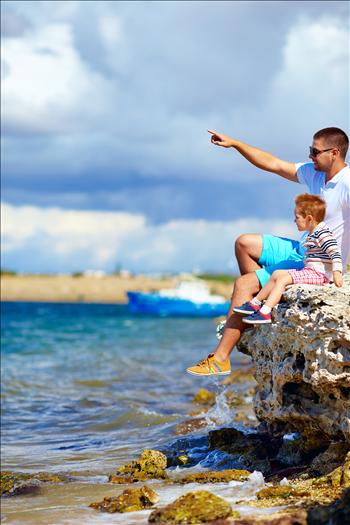Look, up in the sky!
Duration/age

Look, up in the sky - what can you see?
Take some time to encourage your child to stop and look up while you are out walking or lying on the grass.
Talk about what you see. Clouds are always changing. Sometimes they are white, sometimes shades of grey.
There are lots of clouds today. Are they big, fluffy clouds or long thin ones? What colour are they?
You can also talk about why the clouds are different colours or about how they are moving.
Why do you think the clouds are so dark? Why are they moving so fast today?
There are lots of other things to see in the sky. You could look for birds, planes or vapour trails.
I wonder where that bird is going.
That plane is heading north.
Later on, you can go outside at dawn or dusk or when it is dark. What can you and your child discover in the sky? Take time to wonder together at why things may look different.
Materials you will need
- Your eyes and ears
- The sky
Skills this activity improves
Why does this matter?
As you talk with your child about what they can see in the sky they will be learning new words, like fluffy or north. When you ask children about their ideas they will be working out theories about what they see and connecting their theories to what they already know. Theories help children to become skilled problem solvers.
Observation and noticing what is around them helps children to sort, identify and classify.
What does this lead to?
Having a large vocabulary helps children as they communicate with others. It also helps them when they are learning to read, as children often need to predict what a word might be if they don’t immediately recognise it.
Problem-solving is an important life skill. It will help your child work out possible reasons for something and make decisions about which alternative to choose.
Language to use
- Sky, cloud
- Blue, grey, white
- Up
- Plane, jet, jumbo, vapour trail
- Bird, magpie, pigeon, sparrow
- Wind, rain, hail, sun, sunshine
- Sunrise, sunset
- Dawn, dusk, day, night
- Star, moon, constellation
Questions to use
- What else can you see in the sky?
- Can you think of other things that fly?
Useful tips
- See the Bureau of Meteorology website for information about clouds.
- Remind your little ones not to look directly at the sun.
- Remember to talk to your child in your home language.
More ideas
- Encourage your child to look out the window while you're travelling in the car. Talk together about what they see.
- Your child could draw the things they see in the sky. Use some pencils or crayons and a clipboard to rest paper on.
- Go to the library and find some books about the sky to read.
Variation by age
Birth to two year olds
- Even tiny babies will appreciate the chance to be outside. Set up a rug for them to lie on under a tree. They will be experiencing with nearly all their senses - sight, hearing, touch, and smell. Chat with them about what you notice them experiencing.
Three to five year olds
- Ask your child to close their eyes and listen to what they can hear while they are outside. Can they identify things that are in the sky?
- Make a book about different things your child sees in the sky. You could include photos or drawings.
Questions to ask
- Can you see the leaves moving?
- You felt that breeze didn’t you?
Questions to ask
- Can you hear anything that belongs in the sky?
Language to use
- Sky, cloud
- Leaves
- Breeze
Language to use
- Bird, plane, wind


